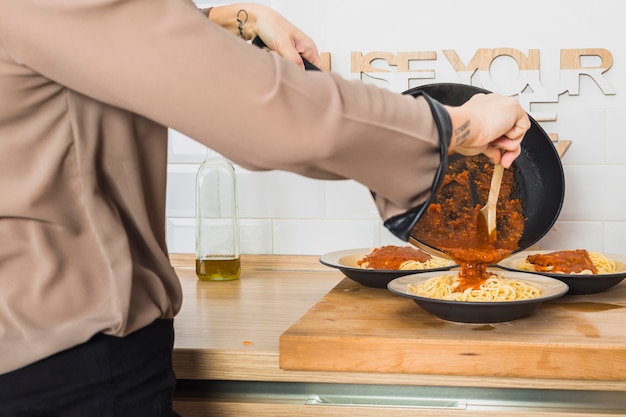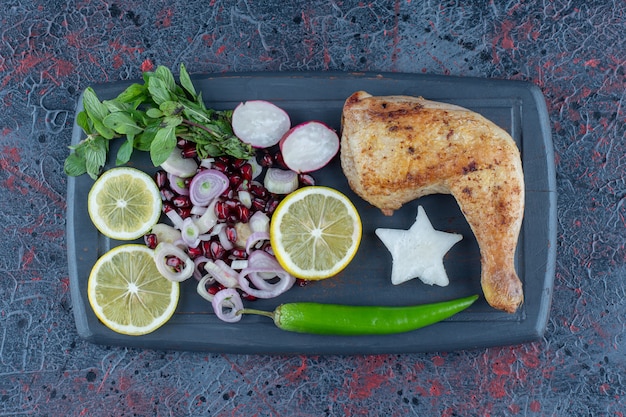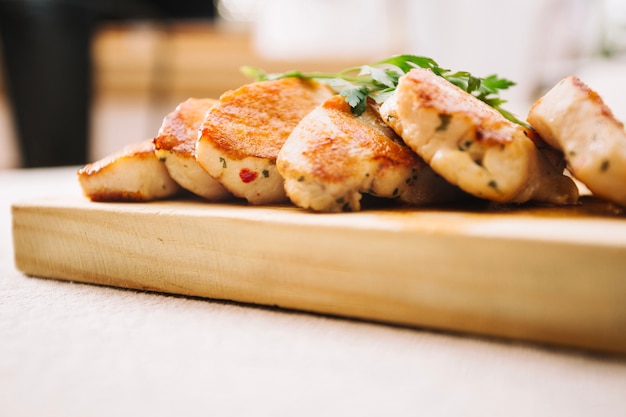Part 1: The Basics of Chicken Breast Cooking

Before we dive into specific cooking methods and times, let's cover some essential basics. Think of these as the building blocks of perfectly cooked chicken.
1. Size Matters:
The first thing to consider is the size of your chicken breast. A small, thin one will cook much faster than a large, thick one. It's like baking a cake – a small cake cooks quicker than a giant one. This applies to chicken breast too!
2. Thickness is Key:
The thickness of the chicken breast is equally important. A thicker breast will naturally need longer cooking time. So, if you've got a couple of different sizes and thicknesses, keep that in mind when you're planning your cooking.
3. Temperature is Everything:
The temperature you cook at also affects the cooking time. Higher temperatures mean shorter cooking times. However, be careful not to overcook! You want that chicken to be cooked through but still juicy and tender. We'll dive deeper into specific temperatures and timings for different cooking methods later on.
Part 2: oven-baked chicken breast: The Ultimate Convenience

The oven is my go-to method for cooking chicken breast. It's incredibly convenient for batch cooking, and I often make a large batch to enjoy throughout the week. It's a real time-saver, especially when you're short on time!
How Long to Bake:
Generally, you can expect to bake a chicken breast at 375°F (190°C) for around 20-25 minutes. But this can vary depending on the thickness of the breast. For thicker breasts, add a few extra minutes to ensure they're cooked through.
Oven-baking tips:
Here's where my years of cooking experience come into play. Here are some tips for oven-baked perfection:
- Preheat Your Oven: This is crucial for even cooking. A preheated oven ensures the chicken cooks evenly and quickly.
- Use a meat thermometer: Invest in a meat thermometer, even if it's a cheap one. It's the most accurate way to know if your chicken is cooked through. Aim for an internal temperature of 165°F (74°C).
- Cook Thicker Breasts Last: If you're baking a batch of chicken breasts, start with the thinner ones and add the thicker ones a few minutes later. This way, everything cooks evenly and you won't end up with some overcooked and some undercooked chicken.
Part 3: pan-frying chicken Breast: The Quick and Crispy Option

Pan-frying is another excellent method that's perfect for a quick weeknight dinner. You get that irresistible crispy skin, and the sizzle in the pan is just so satisfying. It's a great way to add flavor and texture to your chicken breasts.
How Long to Pan-Fry:
You'll need to cook your chicken over medium heat for this method. The time will vary depending on the thickness, but you're looking at around 3-5 minutes per side. You want a nice golden brown color on the outside and the inside cooked through.
Pan-Frying Tips:
Here are some tips to ensure your pan-fried chicken breasts are cooked to perfection:
- Hot Pan is Key: Make sure your pan is nice and hot before you add the chicken. A cold pan will steam the chicken instead of frying it, resulting in a soggy, disappointing outcome.
- Use a Little Oil: Just enough oil to coat the bottom of the pan will do the trick. You don't need to go overboard.
- Don't Overcrowd the Pan: If you're cooking several chicken breasts, cook them in batches to ensure they cook evenly. Overcrowding the pan will lead to uneven cooking and steaming instead of frying.
Part 4: grilling chicken breast: The Smoky Flavor Sensation
Grilling is a fantastic method that adds a smoky char and flavor to your chicken breasts. It's perfect for summer barbecues, but you can enjoy it any time of year. Plus, it's a great way to cook a lighter meal.
How Long to Grill:
Similar to pan-frying, grill your chicken over medium heat. You're looking at around 5-7 minutes per side, depending on the thickness. Remember to keep a close eye on it and use a meat thermometer to check if it's cooked through.
grilling tips:
Here's how to grill like a pro:
- Get Those Grill Marks: To get those beautiful cross-hatch grill marks, turn your chicken 90 degrees halfway through cooking.
- Clean Your Grill: Always clean your grill before grilling. A clean grill will help to prevent sticking and give your chicken a better flavor.
Part 5: chicken breast temperatures: The Science of Cooking
We've talked about timings, but the most accurate way to know if your chicken breast is cooked through is by checking its internal temperature. You want to ensure it reaches 165°F (74°C) throughout. This kills any harmful bacteria and ensures a safe and delicious meal.
Checking the Temperature:
A meat thermometer is a must-have for any chicken enthusiast. It's an inexpensive tool that provides peace of mind and ensures your chicken is cooked perfectly. Insert the thermometer into the thickest part of the chicken, making sure it doesn't touch any bone. Let it sit for a few seconds, and then check the reading. If it's 165°F (74°C) or above, you're good to go!
Part 6: Signs of a Cooked Chicken Breast: The Visual Clues
Sometimes, a meat thermometer isn't available, and that's okay! There are some visual clues that can help you determine if your chicken breast is cooked.
Here's what to look for:
- Clear Juices: When you pierce the chicken with a knife or fork, the juices should run clear.
- Firm Texture: The chicken should feel firm to the touch, and the meat should no longer be pink.
- Golden Brown Color: The outside should have a nice golden brown color.
Remember, if you're unsure, it's always better to err on the side of caution and cook it a bit longer.
Part 7: Avoiding dry chicken breast: The Ultimate Moistness Trick
We've all been there – that dry, rubbery chicken breast that leaves you disappointed. But fear not! There are a few simple tricks to avoid this culinary nightmare.
Tips for Moist Chicken:
- Don't Overcook: This is the biggest mistake people make. As soon as the chicken reaches 165°F (74°C), it's done! Don't keep cooking it.
- Use a Meat Thermometer: Again, this is your best friend for perfectly cooked chicken.
- Give It Space: Don't overcrowd the pan or oven. Give the chicken space to cook evenly. Cook in batches if necessary.
- Cover with Foil: Cover the chicken with foil during the last few minutes of cooking. This helps to retain moisture and prevent drying.
- Basting is Key: Basting with a sauce or marinade can also help to keep the chicken moist and flavorful.
Part 8: Chicken Breast Serving Size: The Right Portion for You
We've tackled cooking time, temperature, and avoiding dryness, but what about the actual serving size? You don't want to overcook, but you also don't want to end up with a mountain of leftover chicken.
General Guidelines:
A general guideline for serving size is 4-6 ounces of cooked chicken breast per person. This is a good amount for a main meal, and it's also a great portion size for salads or sandwiches.
Adjust as Needed:
Of course, the exact amount you need will depend on your appetite and what you're serving with it. For a big feast, you might want to increase that to 6 ounces. If you're just having a light lunch, 4 ounces might be just right.
Part 9: chicken breast recipes: Inspiring flavor combinations
Okay, we've covered the essentials, but now it's time to get inspired! Here are a few of my favorite chicken breast recipes, from simple to more sophisticated. I've personally tried and tested them all, so you can be confident they're winners.
Simple and Easy:
- Lemon Chicken Breast: A classic, quick, and easy recipe. Simply sear the chicken breasts in a pan, then add some lemon juice, garlic, and herbs. You can serve it with a side of rice, roasted vegetables, or pasta for a complete meal.
- Chicken Breast with Creamy Mushroom Sauce: This dish is delicious and comforting. Cook the chicken breasts, then make a creamy mushroom sauce with butter, flour, milk, and mushrooms. Serve it over mashed potatoes or rice.
- Chicken Breast with Roasted Vegetables: A healthy and satisfying meal. Roast some vegetables like broccoli, carrots, and potatoes, and cook the chicken breast in the oven until it's cooked through. It's a simple and flavorful meal that's perfect for any night of the week.
More Fancy:
- Chicken Breast with Dijon Mustard Sauce: A sophisticated and flavorful dish. Cook the chicken breast and make a Dijon mustard sauce with Dijon mustard, white wine, and butter. This sauce is rich and creamy and pairs beautifully with the chicken. Serve it with roasted potatoes or a green salad.
- Chicken Breast with Lemon and Herb Crust: A delicious and flavorful recipe. Make a crust with breadcrumbs, parmesan cheese, lemon zest, and herbs, then bake the chicken breast until it's cooked through. The crust adds a wonderful crunch and flavor to the chicken. Serve it with a side of roasted vegetables or a quinoa salad.
Part 10: Chicken Breast Storage: Keeping It Fresh and Delicious
You've cooked up a batch of perfect chicken breasts, but how do you store them to keep them fresh and delicious? Here's a guide to storing your chicken breast properly, whether you're keeping it for a few days or freezing it for later.
Refrigerator Storage:
Store cooked chicken breast in an airtight container in the refrigerator for up to 3-4 days. If you need to store it longer, consider freezing it.
Freezer Storage:
To freeze chicken breast, place it in an airtight container or freezer bag. It can be stored in the freezer for up to 2-3 months.
Tips for Freezing:
Here's a little tip: It's best to freeze chicken breast individually so you can easily take out only what you need. This prevents freezer burn and helps your chicken stay fresh. And remember to always thaw your chicken in the refrigerator before cooking.
FAQs: Your Chicken Breast Questions Answered
What happens if I overcook chicken breast?
If you overcook chicken breast, it becomes dry and rubbery. It loses its moisture and becomes tough to chew. This is why using a meat thermometer is so important. It helps you avoid overcooking and ensures a juicy, tender result.
Can I cook chicken breast from frozen?
Yes, you can cook chicken breast from frozen, but it will take longer. Add about 50% to your normal cooking time. However, it's always best to thaw the chicken in the refrigerator first if you have time. This helps to ensure more even cooking.
What can I serve with chicken breast?
Chicken breast is so versatile, so there are endless possibilities for sides! Here are a few ideas to get you started:
- Roasted vegetables
- Mashed potatoes
- Rice
- Pasta
- Salads
- Bread
What are the best ways to season chicken breast?
You've got plenty of options when it comes to seasoning chicken breast. Here are a few of my favorites:
- Salt and pepper (a classic for a reason!)
- Garlic powder
- Onion powder
- Paprika
- Herbs like thyme, rosemary, oregano
Can I reuse leftover cooked chicken breast?
Absolutely! Leftover cooked chicken breast can be used in a variety of dishes. Here are some ideas to inspire your culinary creativity:
- Salads
- Sandwiches
- Soups
- pasta dishes
- chicken salad
Don't be afraid to get creative with your leftovers! The possibilities are endless!
Everyone is watching

Prime Rib Roast Cooking Time Chart: Per Pound Guide
Cooking TipsPrime rib roast. Just the name conjures images of lavish dinners, crackling fires, and hearty laughter. It’s ...

How Long to Bake Potatoes in the Oven (Perfect Every Time)
Cooking TipsBaked potatoes are a staple in my kitchen. They're incredibly versatile, delicious, and surprisingly easy to m...

Perfect Rice Every Time: The Ultimate Guide to Cooking Rice
Cooking TipsAs a self-proclaimed foodie, I've always been a bit obsessed with rice. It's the foundation of countless cuisi...

The Ultimate Guide to Cooking Asparagus: Tips, Techniques, and Recipes
Cooking TipsAsparagus. The mere mention of this spring delicacy conjures up images of vibrant green spears, crisp and burs...

Ultimate Guide to Cooking the Perfect Thanksgiving Turkey
Cooking TipsThanksgiving. Just the word conjures up images of overflowing tables laden with delicious food, the scent of r...
